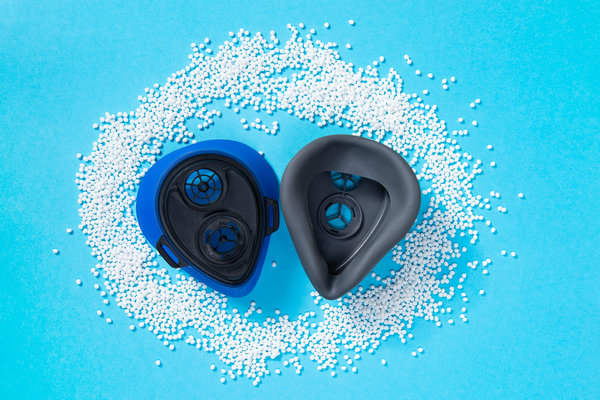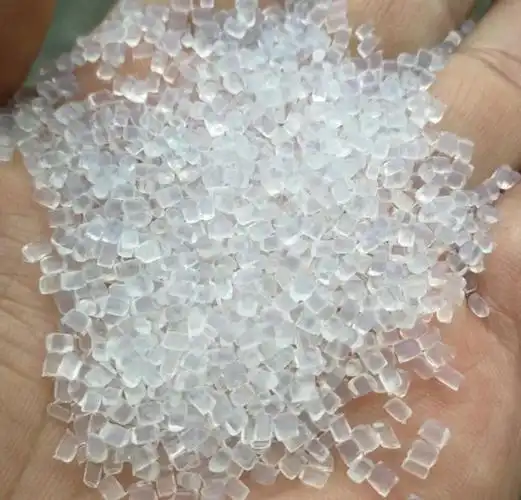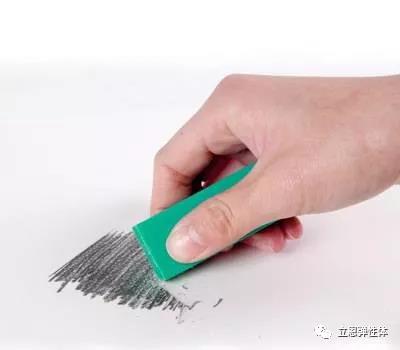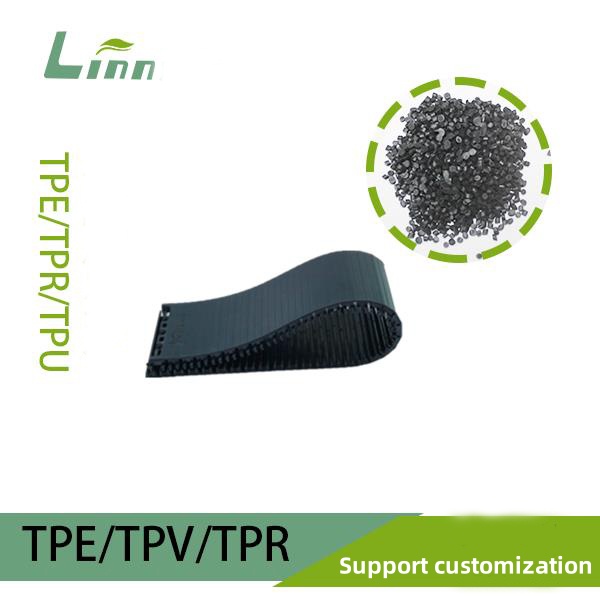Having spent years in the materials science and manufacturing world, I’ve worked on countless projects involving thermoplastic elastomers (TPEs), from fitness bands to medical tubing. One question that keeps popping up, especially among engineers and designers, is about the film coated on TPE surfaces. This thin layer, often applied to enhance performance or aesthetics, can be a bit of a mystery. What’s it made of? Why is it there? And how does it affect the product? Drawing from my hands-on experience and industry insights, I’ll unpack the materials typically used for these films, their purposes, and how they impact TPE applications. My aim is to help you understand this topic clearly, whether you’re designing a product or just curious about the shiny coating on your TPE grip.

Why TPE Surfaces Are Coated with a Film
Before diving into the materials, let’s talk about why TPEs often have a coated film in the first place. TPEs are versatile materials, blending the flexibility of rubber with the processability of plastics. They’re used in everything from soft-touch handles to flexible seals. However, TPEs can have limitations—like low surface energy, which makes them prone to sticking to dirt or losing their grip in wet conditions. A surface film addresses these issues by improving durability, aesthetics, feel, or functionality.
In my early days working with a consumer electronics manufacturer, we used a coated TPE for phone grips. The film not only made the grip feel smoother but also prevented it from picking up lint and oils from users’ hands. Understanding the material of this film is key to choosing the right coating for your application or troubleshooting issues like peeling or wear.
Common Materials Used for TPE Surface Films
The film on a TPE surface isn’t a one-size-fits-all solution. The choice of material depends on the application, processing method, and desired properties. Here are the most common materials I’ve encountered in my work:
1. Polyurethane (PU) Films
Polyurethane films are among the most popular coatings for TPE surfaces. PU is a versatile polymer known for its high abrasion resistance, flexibility, and clarity, making it ideal for enhancing the durability and feel of TPEs. PU films can be applied as a liquid coating (via spraying or dipping) or as a pre-formed film laminated onto the TPE during manufacturing.
I once worked on a project involving TPE shoe soles coated with a PU film to improve wear resistance. The PU layer added a glossy finish and protected the TPE from scuffing, extending the soles’ lifespan. PU films are also great for soft-touch applications, like grips or handles, because they maintain flexibility while adding a premium feel.
Key Benefits:
Enhances abrasion and scratch resistance.
Provides a smooth, tack-free surface.
Can be formulated for UV resistance or anti-slip properties.
Challenges: PU films can be costly, and improper adhesion to TPE (especially non-polar types like SEBS) may lead to peeling if surface preparation is inadequate.

2. Silicone Films
Silicone films are another common choice, especially for applications requiring high slip resistance or chemical inertness. Silicone coatings provide a silky, non-sticky surface that repels water and oils, making them ideal for TPEs used in wet or oily environments, like kitchen tools or medical devices.
In a medical project, we coated TPE tubing with a silicone film to reduce friction during insertion into devices. The silicone layer made the tubing glide smoothly while maintaining its flexibility. Silicone films are often applied via spray coating or co-extrusion, where a thin silicone layer is bonded to the TPE during processing.
Key Benefits:
Excellent water and oil repellency.
Low friction for smooth surfaces.
Biocompatible for medical applications.
Challenges: Silicone films can be expensive and may require primers or plasma treatment to adhere well to TPEs, especially non-polar ones.
3. Acrylic Films
Acrylic films are used when optical clarity or UV resistance is a priority. These coatings are typically applied as liquid acrylic resins that cure into a hard, glossy layer. Acrylic films are less flexible than PU or silicone but excel in applications where TPEs need a protective, shiny surface, like decorative trims or transparent seals.
I recall a project where we used an acrylic coating on TPE window seals to enhance their weather resistance. The acrylic film protected the TPE from UV-induced degradation, keeping the seals flexible and clear for years. Acrylics are often applied via spray coating or dip coating and can be UV-cured for faster processing.
Key Benefits:
Superior UV and weather resistance.
High gloss and clarity for aesthetic appeal.
Cost-effective compared to PU or silicone.
Challenges: Acrylic films are less flexible, so they’re not ideal for highly elastic TPEs, as cracking can occur under strain.

4. Fluoropolymer Films
Fluoropolymer films, like PTFE (Teflon) or FEP, are used in high-performance applications where extreme chemical resistance or low friction is required. These films are less common due to their high cost but are invaluable for TPEs in harsh environments, such as industrial seals or automotive components exposed to oils and fuels.
In an automotive project, we coated TPE gaskets with a thin PTFE film to withstand exposure to engine oils. The fluoropolymer layer ensured the TPE remained functional without sticking or degrading. These films are typically applied via co-extrusion or lamination.
Key Benefits:
Unmatched chemical and oil resistance.
Ultra-low friction for sliding applications.
High thermal stability.
Challenges: High cost and complex application processes make fluoropolymers a niche choice.
5. Wax-Based Films
Wax-based films are sometimes used as a cost-effective coating to improve surface slip and anti-stick properties. These are typically paraffin or polyethylene waxes applied as a thin layer during extrusion or post-processing. Wax films are common in low-cost TPE products, like disposable grips or packaging films.
I’ve seen wax coatings used on TPE packaging films to prevent sticking during stacking. While effective for basic applications, wax films offer limited durability and can wear off under abrasion or cleaning.
Key Benefits:
Low cost and easy to apply.
Improves surface slip and anti-stick properties.
Suitable for temporary or disposable applications.
Challenges: Low durability and poor resistance to abrasion or chemicals.
How Are These Films Applied?
The application method for TPE surface films depends on the coating material and the production setup. Here’s what I’ve seen in practice:
Spray Coating: Liquid PU, silicone, or acrylic coatings are sprayed onto the TPE surface and cured (via heat, UV, or moisture). This is common for complex shapes like grips or tubing.
Dip Coating: The TPE part is dipped into a liquid coating solution, ideal for uniform coverage on small parts.
Co-Extrusion: A thin film (e.g., silicone or fluoropolymer) is extruded simultaneously with the TPE, creating a seamless bond. This is common in tubing or seals.
Lamination: Pre-formed films (e.g., PU or PTFE) are bonded to the TPE surface using heat or adhesive, often used for flat or sheet-like TPEs.
Brush or Roll Coating: Used for wax-based or thin liquid coatings in low-cost applications.
In my experience, co-extrusion and spray coating are the most common for high-quality TPE products, as they ensure a uniform, durable film. However, the choice depends on your production capabilities and budget.

Why the Film Matters: Practical Implications
The film on a TPE surface isn’t just cosmetic—it directly affects the product’s performance. Here’s how:
Durability: Films like PU or fluoropolymers protect TPEs from abrasion, UV degradation, or chemical exposure, extending their lifespan.
Feel and Grip: PU and silicone films can enhance tactile comfort or grip, critical for handles, grips, or wearable devices.
Aesthetics: Acrylic or PU films add a glossy or matte finish, improving the product’s visual appeal.
Functionality: Fluoropolymer or silicone films reduce friction or stickiness, making TPEs easier to handle or clean.
In a project for a fitness brand, we used a PU film on TPE resistance bands to reduce stickiness and improve grip. Users loved the smooth, premium feel, and the coating prevented the bands from picking up dirt during workouts.
Comparison Table: Common TPE Surface Film Materials
To help you choose, here’s a table summarizing the key film materials for TPE surfaces:
|
Film Material |
Key Properties |
Applications |
Limitations |
|---|---|---|---|
|
Polyurethane (PU) |
Abrasion-resistant, flexible, soft-touch |
Grips, shoe soles, handles |
Costly, adhesion challenges |
|
Silicone |
Low friction, water/oil-repellent, biocompatible |
Medical tubing, kitchen tools |
Expensive, requires primers |
|
Acrylic |
UV-resistant, glossy, cost-effective |
Window seals, decorative trims |
Less flexible, may crack |
|
Fluoropolymer |
Chemical-resistant, low friction, heat-stable |
Industrial seals, automotive parts |
High cost, complex application |
|
Wax-Based |
Low cost, anti-stick, easy to apply |
Packaging films, disposable grips |
Low durability, wears off |
Practical Tips for Working with Coated TPEs
Based on my years in the field, here are some actionable tips for dealing with TPE surface films:
Verify the Coating Material: Ask your supplier for the technical data sheet to confirm the film material and its properties. This ensures it matches your application’s needs (e.g., UV resistance for outdoor use).
Test for Adhesion: If you’re applying a film yourself, test the adhesion on a small TPE sample. Plasma treatment or primers can improve bonding, especially for non-polar TPEs like SEBS.
Consider the Environment: For outdoor TPEs, choose PU or acrylic films with UV stabilizers. For chemical-heavy settings, opt for fluoropolymers.
Maintain the Coating: Clean coated TPE surfaces with mild soap and water to avoid damaging the film. Avoid abrasive cleaners that could wear off PU or silicone layers.
Monitor Wear: If the film starts peeling or cracking, it may indicate poor adhesion or an unsuitable coating. Consult your supplier to reformulate or switch materials.
A Real-World Example
A few years ago, I worked with a company producing TPE grips for outdoor tools. They initially used a wax-based coating to reduce stickiness, but it wore off quickly, leaving the grips tacky and prone to dirt buildup. After testing, we switched to a PU film applied via spray coating, which provided a durable, soft-touch surface that resisted abrasion and UV exposure. The grips not only lasted longer but also received glowing customer feedback for their premium feel. The key was choosing a film that balanced cost, durability, and user experience.

Final Thoughts: Choosing the Right Film for Your TPE
The film on a TPE surface can significantly enhance its performance, whether it’s improving durability, grip, or aesthetics. Polyurethane, silicone, acrylic, fluoropolymer, and wax-based films each have unique strengths, and the right choice depends on your application’s demands. From my experience, taking the time to match the film to the TPE’s environment and function is crucial. Whether you’re designing a product or troubleshooting an issue like peeling, understanding the coating material empowers you to make informed decisions.
If you’re working with coated TPEs, don’t hesitate to experiment with small samples or consult your material supplier—they can provide insights or custom formulations to get it just right. With the right film, your TPE product can stand out in both performance and longevity.
Related Questions and Answers
Q: How do I know what film is on my TPE product?
A: Check the technical data sheet or contact the manufacturer. You can also perform simple tests, like checking for slip resistance (silicone) or glossiness (acrylic), but supplier documentation is the most reliable source.
Q: Can I remove the film from a TPE surface?
A: Removing a film is difficult without damaging the TPE. Films like PU or silicone are tightly bonded, often via co-extrusion or curing. If the film is peeling, consult the supplier for recoating options rather than removing it.
Q: Are TPE surface films safe for skin contact?
A: Most films, like PU and silicone, are biocompatible and safe for skin contact, especially in medical or fitness applications. Verify with the supplier that the coating meets regulations like FDA or RoHS.
Q: Why is my TPE film peeling off?
A: Peeling often results from poor adhesion due to inadequate surface preparation (e.g., no primer or plasma treatment) or an incompatible film/TPE combination. Check the TPE’s polarity and use a compatible coating or primer.
Q: Can I apply a new film to an existing TPE product?
A: Yes, but it requires surface preparation (cleaning, abrasion, or plasma treatment) and a compatible coating, like PU spray or silicone dip. Test on a small area first to ensure adhesion and compatibility.





